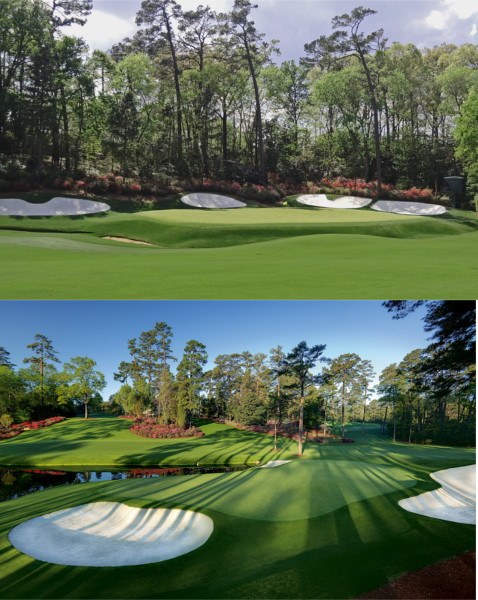
Augusta National’s Front Nine: An Appreciation
For a very long time, Augusta National’s first nine holes were shrouded in mystery for most golf fans. Augusta’s exclusive deal with CBS sports for decades ensured that coverage wouldn’t begin until mid-afternoon on the weekends. When Thursday and Friday action began being televised with USA Network (sometime in the 1980’s), we again saw action almost exclusively from Augusta’s back 9.
Even for Sunday’s final round, CBS began broadcasting as the leaders were in the middle of the front nine and we wouldn’t see any of their live shots until the 9th hole. Finally, in the early 1990’s, Augusta National began allowing coverage of all 18 of their holes.
Not that any of us were complaining. Beginning with the difficult downhill 10th hole, the trip through Amen Corner and the huge grandstand that borders the 15th green and 16th tee box, we became as familiar with the course as our local 9. Augusta’s back nine has been tremendous theater for generations.
Almost hidden in secrecy were Augusta’s opening nine holes. The first hole at Augusta (Tea Olive – 445 yard par 4) is no bargain, especially after it was lengthened in the past decade to 445 yards. A devilishly difficult green awaits players and the right pin placement creates a number of anxious moments on the greens.
The second hole (Pink Dogwood – 575 yard Par 5) is a breather of sorts. #2 is a downhill, dogleg left par 5 that’s a great birdie, or even eagle opportunity, for players that find the fairway off the tee. The difficultly, as it is so many times at Augusta, is a huge green complex that can leave all kinds of difficult chips and lag putts.
Augusta’s 3rd hole (Flowering Peach – 350 yard Par 4) is a short par 4 (in very rare instances when the tees are up, this hole is drivable for some players) with a small, very fast slightly elevated green with a false front. It’s a short hole, but one that is tough to get the ball close to the hole. Augusta National designer Allister McKenzie called it a very, nearly perfect golf hole. Like a lot of holes at Augusta, the aggressive play required to make birdie brings bogey and even double bogey into the equation.
The two par 3’s on the front 9 are every bit as difficult as #12 and #16 on the back side. Par is a very good score at both the 4th and the 6th hole. The 4th hole (Flowering Crab Apple – 240 yards Par 3) is a long, downhill par 3 with a green guarded by massive bunkers left and right and a false front green. The 6th hole (Juniper – 180 yards Par 3) is an equally difficult hole, with a massive multi-leveled green that can offer extremely challenging pin placements.
Augusta’s 5th hole (Magnolia – 455 yard par 4) is another challenging golf hole. Huge, deep bunkers border the left side of the fairway and towering Georgian pines await drives that miss to the right. The huge green also creates havoc – as the green witnessed multiple four-puts in this year’s Masters.
Augusta’s 7th hole (Pampas – 450 yard par 4) is a par four with a very narrow driving area and a green protected by deep bunkers in the front. The problems also can continue on the green which is severely sloped from back to front making it very challenging to get it up and down if a player’s second shot runs through the back of the green.
Augusta’s 8th hole, (Yellow Jasmine – 570 yard par 5), is harder than the par-5 second hole. Bunkers guard the right side of the fairway and the hole plays longer than #2. While #2 is protected by bunkers, the eighth hole is protected by huge mounds left and right of the green. If a player does get home in two, they can be left with massively long putts on a green that while not as contoured as many on the course, provides subtle, difficult-to-read breaks.
The 9th hole (Carolina Cherry – 460 yard par 4) is somewhat better known hole. It’s a downhill drive to a valley and then uphill to a green that is sloped severely from back to front. This hole also has a massive false front that sends approach shots that come up short, or approach shots that have too much back spin, rolling several yards off the green leaving a difficult up and down. This hole can be birdied, but just as easily bogeyed depending on the day’s pin placement.





